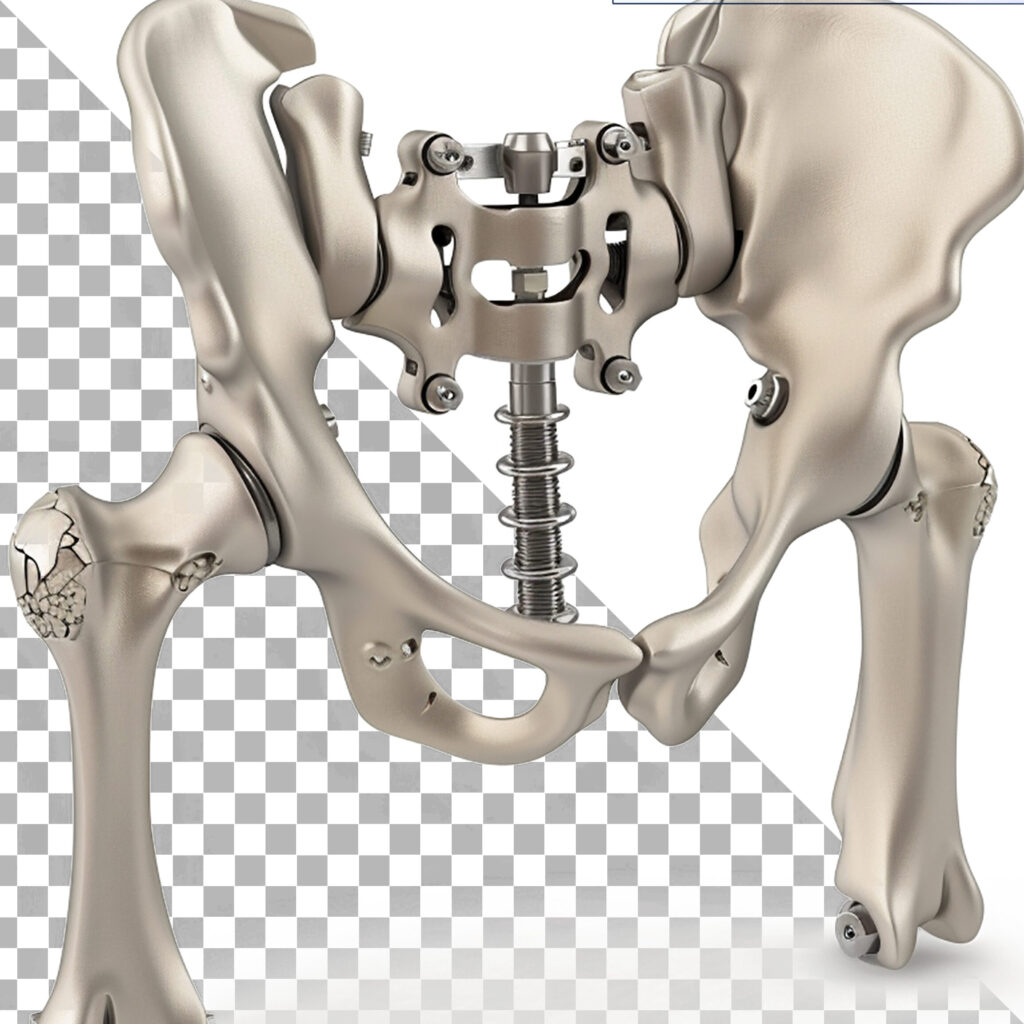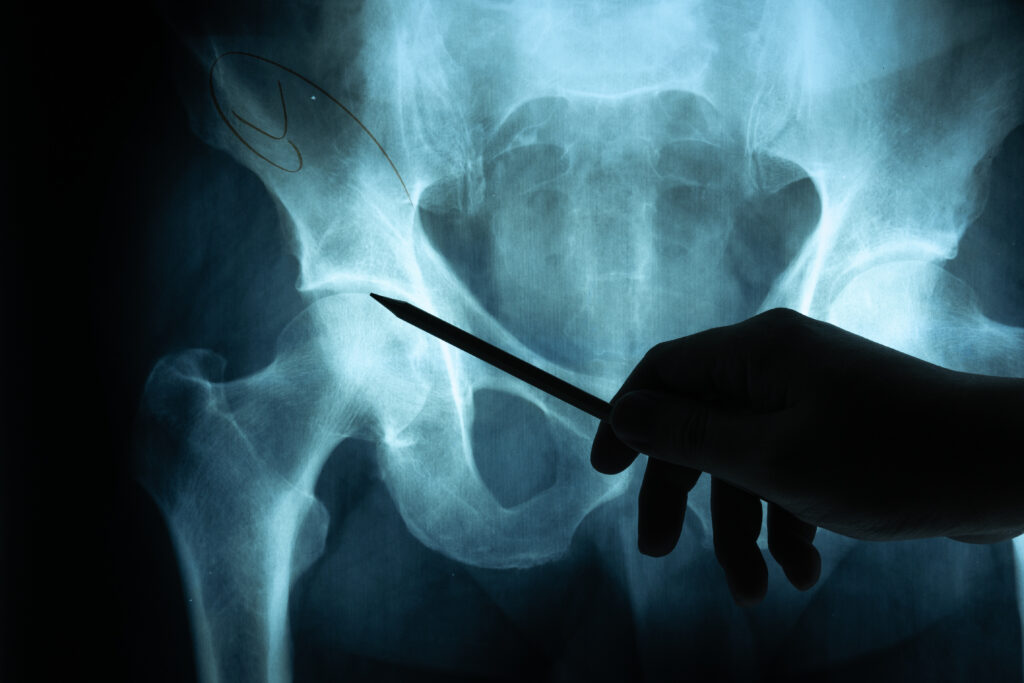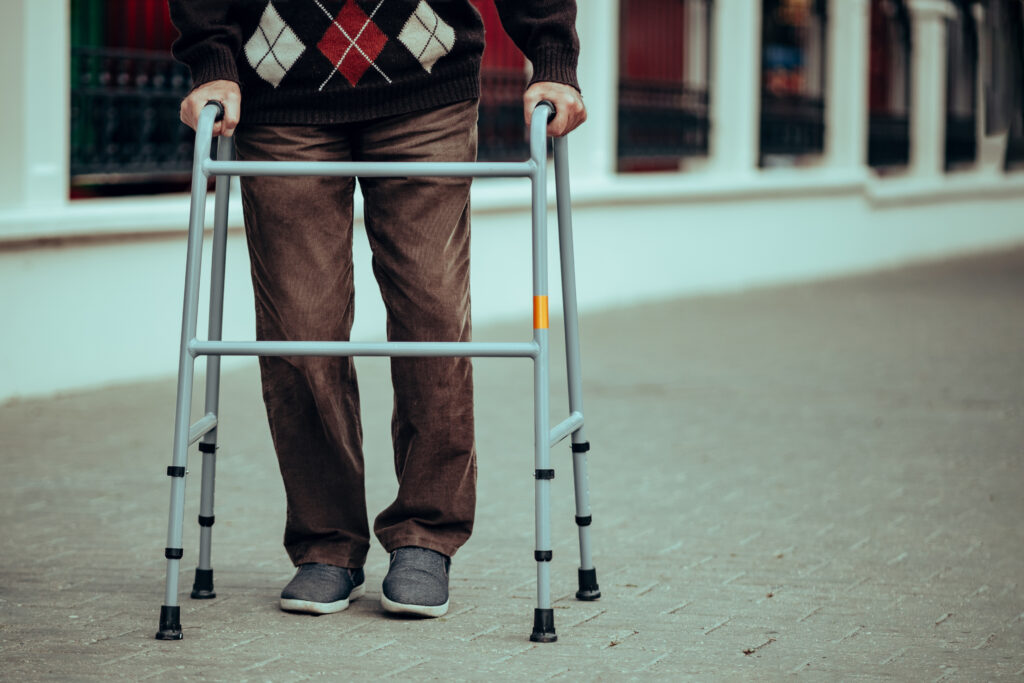Total hip replacement surgery can change lives for people with severe hip joint damage or constant pain. A surgeon replaces a worn-out joint with an artificial one to relieve pain and help people move again. Many people worldwide have had this surgery. In the U.S. alone around 2.7 million people live with hip implants. Experts call it one of the most successful surgeries in modern medicine because most patients get big pain relief and better movement. In Pakistan respected surgeons like Dr. Imran Salim Malik in Lahore use modern minimally invasive methods. These methods help with safe outcomes and faster healing.
What is a Hip replacement procedure?
A Hip replacement procedure is also known as hip arthroplasty. A surgeon takes out the damaged parts of the hip joint and puts in artificial parts. The hip is a ball‑and‑socket joint. The ball is the femoral head at the top of the thigh bone. The socket is the acetabulum in the pelvis. In a Total hip replacement surgery the surgeon removes the femoral head and inserts a metal stem into the thigh bone. Then a metal or ceramic ball is put on the stem. The worn socket is cleared, and a metal cup is placed in it.
A liner made of plastic, ceramic, or metal is added inside the cup to let the ball move smoothly. These parts form a new hip joint and stop bone‑on‑bone pain. Some hips are cemented in. Others are uncemented so bone can grow into them. Surgeons pick the best type for you. New materials like strong plastic liners and ceramic heads last for many years.
Why Is the Hip replacement operation done?
A Hip replacement operation is done when hip damage causes constant pain and limits movement. The most common cause is osteoarthritis, which wears away cartilage. Other causes include rheumatoid arthritis, bone death from loss of blood supply, serious fractures, or childhood hip conditions. You might need this if you have:

- Strong hip pain that makes walking, stairs, or standing hard
- Pain at rest or at night that affects sleep
- Stiffness or less motion that makes routine tasks hard
- Little help from therapy, meds, or a cane
If these apply and tests show advanced joint damage, hip replacement can make a big difference. Doctors assess each person. Age does not stop the surgery. People from teens to those in their 80s can benefit, depending on their pain and disability.
Preparing for Surgery
Getting ready makes recovery smoother. Before surgery doctors review your history, meds, and run tests like X‑rays or CT scans to plan. Steps you can take:
- Improve health: Control diabetes or blood pressure. Stop smoking to help bone healing and cut infection risk. Lose weight if needed to ease pressure on the new hip.
- Do pre-surgery exercises (“prehab”) to strengthen leg and hip muscles.
- Prepare your home: Remove rugs or clutter. Use a high chair. Add safety bars in the bathroom. Get a raised toilet seat and shower chair. Get mobility aids like a walker or a cane in advance.
- Plan for help: Arrange a ride home and someone to assist at home for the first week or two. Stay on one floor if your home has stairs.

During the Hip replacement operation
The surgery takes about 1 to 2 hours. You get spinal or general anesthesia. Doctors use methods to lower blood loss. The surgeon makes an incision from the front or back of the hip. Muscle is spared in minimally invasive techniques for faster healing. The surgeon removes the femoral head and cleans the socket. Then the stem goes into the thigh bone. The ball goes on the stem. The cup is placed in the socket. A liner is added, and the new joint is tested for movement and leg length. The incision is closed. Sterile methods and antibiotics reduce infection risk.
Modern Improvements
Technology now helps with precision. Robotic and computer methods guide implant placement in 3D. This lowers the chance of dislocation or poor fit and may help the implant last longer. Better pain control with spinal blocks and new meds helps you feel less pain and reduces nausea. Many can walk the same or the next day. Minimally invasive front approaches speed healing. Many go home after one night now. Implants last longer, too. New liners and ceramic heads reduce wear. Most hips still work well after 15 years, and many last 25 years or more.
Recovery and Rehabilitation
Recovery starts right after surgery. You may feel moderate pain in the first days, but meds and ice help. Pain usually peaks in days two to three and then eases. You start moving right away. Walking with help on the same day or the next is common. A therapist guides safe movement and exercises. Most leave the hospital after one or two nights. Some go home the same day. At home, you keep doing therapy. You use a walker or crutches first. After 2 to 3 weeks, many switch to a cane.
By 4 to 6 week,s most walk without ai,d though they may still feel weak. You see your surgeon after six weeks and may get the green light to drive. Desk work may return in six weeks. Physical jobs may need three months. In three months, youwill move well without pain. Your strength and balance keep getting better for up to a year.
Precautions After Surgery
For the first six weeks, follow these rules to avoid dislocation:
- Don’t bend your hip past 90 degrees
- Don’t cross your legs
- Don’t twist your operated leg
- Use your walker or cane as advised
- Avoid fall hazards, wear firm shoes, and use rails on stairs
Doctors talk you through safe movement. Most rules lift after six weeks once your joint is stable.

Risks and Complications
Like any surgery, there are risks, but serious problems are rare. They include:
- Blood clots: Early walking, compression, and meds help prevent them
- Infection: Keep the wound clean and dry, and watch for fever or redness
- Dislocation: Precise surgery and precautions reduce this risk
- Leg length changes: Small differences may happen, but can be fixed with shoe inserts
- Rare risks: Fracture, nerve or blood vessel injury, anesthesia issues
Results and Outlook
Most feel big pain relief and see major gains in movement after a Total hip replacement surgery. Daily tasks become easy again. Around 90% say they are satisfied with the result. Most hips last decades. After healing you can resume low-impact activities like walking, swimming, golf, or cycling. High-impact sports may stay off-limits to protect the joint.
FAQs
1. How long does a hip replacement surgery take?
It takes about 1 to 2 hours.
2. When can I start walking after a hip replacement operation?
Often you start walking on the same day or the next day after surgery.
3. How long is hospital stay after Total hip replacement surgery?
Most people leave after one or two nights. Some go home the same day.
4. When can I drive after a hip replacement procedure?
Many people can drive around six weeks once they feel steady and are off strong pain meds.
5. How long does recovery from hip replacement operation take?
Many get back to normal at about 3 months. Full recovery takes up to a year.
6. When do I stop taking hip precautions?
Most follow precautions for the first six weeks. Some extend them to twelve weeks based on surgeon advice.
